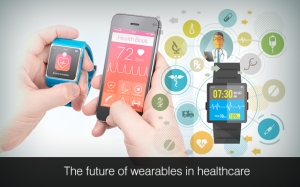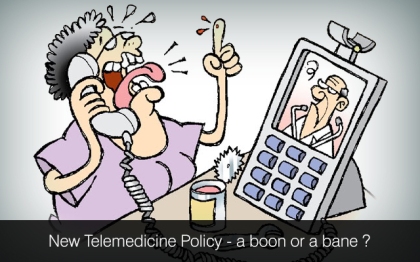A growing number of physicians are making use of EHRs, and yet that does not mean that many of them are positive or happy about its efficiency. Based on one of the recent study by Accenture, out of 600 American doctors, a part of 2,600 doctors study in 6 countries. The use of EHR in the USA has raised to double figures from the physicians ever since 2012. Although, the percentage of perceived advantages from 2012 to 2015 has dropped. Just 46% currently feel that electronic health records (EHRs) enhance treatment, down from 62%, 64% feel that EHRs reduce medical errors, down from 72%. Out of them, 46% feel that the tools enhanced health outcomes, a drop from 58% in the year 2012. Fully, 70% think that EHRs minimize their time with patients, over 76% report the deficiency of interoperability as restricting the standard of care they give you.
 As per the 2015 Technology research, it is discovered that 53.3% among 1,181 respondents have completely executed an EHR, whereas 19.6% don’t posses even one. The rest perhaps have been working with a hospital-based system or maybe were undergoing some implementation. Among those practices which didn’t have an EHR, the reasons for not implementing is because they couldn’t see it would enhance patient care. Those who had implemented an EHR stated that the system did not really made any difference in their life, 15.5% observed drop in the productivity, whereas 36.9% are finding fewer patients on a daily basis upon implementation of EHR. Just over 51 percent of the respondents experienced no difference in a number of patients seen.
As per the 2015 Technology research, it is discovered that 53.3% among 1,181 respondents have completely executed an EHR, whereas 19.6% don’t posses even one. The rest perhaps have been working with a hospital-based system or maybe were undergoing some implementation. Among those practices which didn’t have an EHR, the reasons for not implementing is because they couldn’t see it would enhance patient care. Those who had implemented an EHR stated that the system did not really made any difference in their life, 15.5% observed drop in the productivity, whereas 36.9% are finding fewer patients on a daily basis upon implementation of EHR. Just over 51 percent of the respondents experienced no difference in a number of patients seen.
Insufficient interoperability was pointed out as the most pushing IT issue for 14.2% of respondents, 13.8% respondents mentioned implementation had been their main concern, whereas 13.3% battled to meet the Meaningful Use requirements. In addition to this, 62.8% said that they have successfully attested to MU Stage 1 of the program, just 34.6% respondents have attested to MU Stage 2. While 49.4% of the respondents mentioned that their vendor have fulfilled the Stage 2 requirements. Only 12.9% of the respondents have been fully happy with their EHR vendor, whereas 42% have been merely pleased with their vendor and 27.9% have found their vendor as mediocre. A number of respondents that were dissatisfied or very dissatisfied were 17%.
While 66.5% two-thirds of respondents stated that their EHR enhanced patient documentation, only 32.3% one-third of the respondents mentioned that it has generated revenue to their investment. About 36% of the respondents have performed a security risk analysis to their EHR’s weaknesses in protecting electronic patient data, while doing this is a necessity of both the Health Insurance Portability and Accountability Act (HIPAA) and the MU program. For all the hype regarding data sharing, over 77.6% three-fourths of the respondents had not been in a health information exchange. Merely 40.3% have been using a cloud vendor. The study confirms another research over doctor EHR adoption. Most of the doctors that are making use of the systems and they haven’t completely accepted.
Physicians are experiencing several challenges using EHRs as well as the Meaningful Use program, and they are being given an opportunity to express them publicly because of a new effort initiated by the AMA, launched a meeting on July 20. The meeting was done along with the Medical Association of Georgia (MAG), was aimed towards allowing doctors to express their feedback on EHRs as well as Meaningful Use so that a ‘clear message’ could be forwarded to the people who are in the policy making, as stated by Steven Stack, President, American Medical Association.
Electronic health records have a lot of potential, however, that isn’t the only reality, Stack stated during the event. He advised the doctors to express their experiences, negative or positive by using a new website, BreakTheRedTape.org, as well as on Twitter using #FIXEHR. The American Medical Association (AMA) focused entirely on usability plus the smooth flow of the information, in addition to the need to delay Meaningful Use Stage 3 so it may be aligned along with other payment models, Steven Stack mentioned. At present the efficiency of EHRs is blunting, their effectiveness is decreasing and getting around doctors and their patients.
The whole lot of doctors participating in the meeting at the town hall shared their reviews using the systems; most of their feedbacks were negative, apart from electronic prescribing. Instances of the certain issue included workflow concerns, reduced productivity, deficiency of interoperability, not being able to meet Meaningful Use Stage 2 as well as the expense required for the systems. Many said that they have been so disappointed using their EHRs as well as the MU program that they perhaps stopped the use of EHR or decided not to take part and incurred the penalty.
At Mindfire Solutions, we have been providing custom healthcare IT development services to our esteemed clients for more than 11 years now. Our healthcare team can help you with development of custom EMR, EHR, PMS, CPOE and mobile healthcare mHealth app development to name a few, or we can customize your existing products as per requirements. Please feel free to write to us in case of any custom healthcare needs and we will revert back in one business day. You can also avail our limited period Risk-Free Trial offer.








